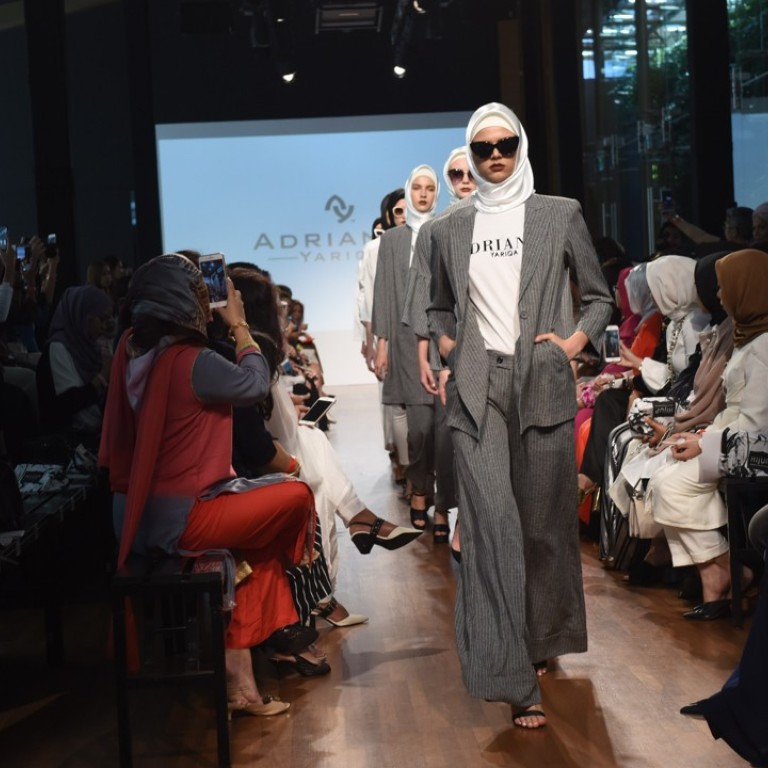
‘Modest fashion’ runs the gamut at Singapore Fashion Week, from fully covered to frou-frou gowns
Designers explore glamour, allure and beauty through a mixture of demure and comparatively daring looks for the modern woman of faith – and Asian women who just don’t want to reveal too much
Leading New York designer Jason Wu may have headlined Singapore Fashion Week (SGFW) 2017, but it was a series of catwalk shows featuring what’s known as “modest fashion” that proved to be the talking point of the event.
Macau-born social media influencer-turned-designer Yoyo Cao at Singapore Fashion Week
In shows coordinated by online portal Modestyle.asia, an array of womenswear aimed primarily at the Muslim market was shown by designers from across Asia and the Middle East, including labels from Singapore, Malaysia, Indonesia, China, Abu Dhabi and Bangladesh. The looks on display illustrated the breadth of cultural diversity that falls under the banner of “modest” style.
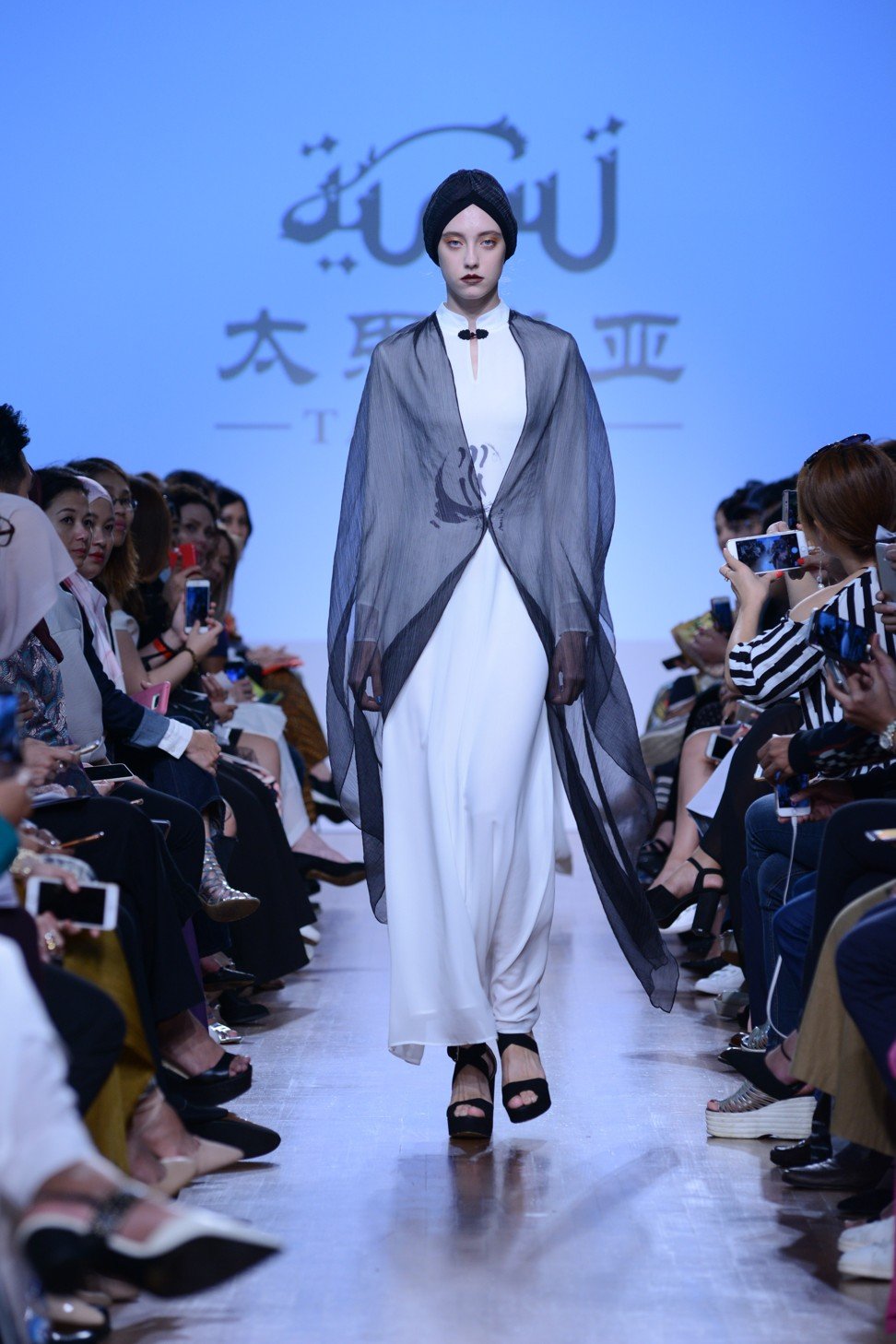
Much of the modest wear created for Muslim women covers the skin above the wrist and ankle, obscures the figure, and conceals the neck and hair. Precisely how much of the body is covered is a matter of individual taste, beliefs, and personal style.
An array of interpretations of modesty – from demure to comparatively daring – were represented at SGFW, which took place last weekend at the National Gallery of Singapore.

Singaporean label Kaifiyyah’s slogan Libaasut Taqwa (Dress of the Pious) was embodied in voluminous multi-cloth abaya robing and headscarves, accented with Palestinian keffiyeh motifs, the garments concealing all but the models’ faces and hands.
Immensely popular Indonesian designer Dian Pelangi, whose Instagram account boasts 4.8 million followers, also covered models head to toe, with brilliant pops of colour, bold graphic patterns, and fez-like peci hats (more commonly worn by Javanese men) sported under headscarves.
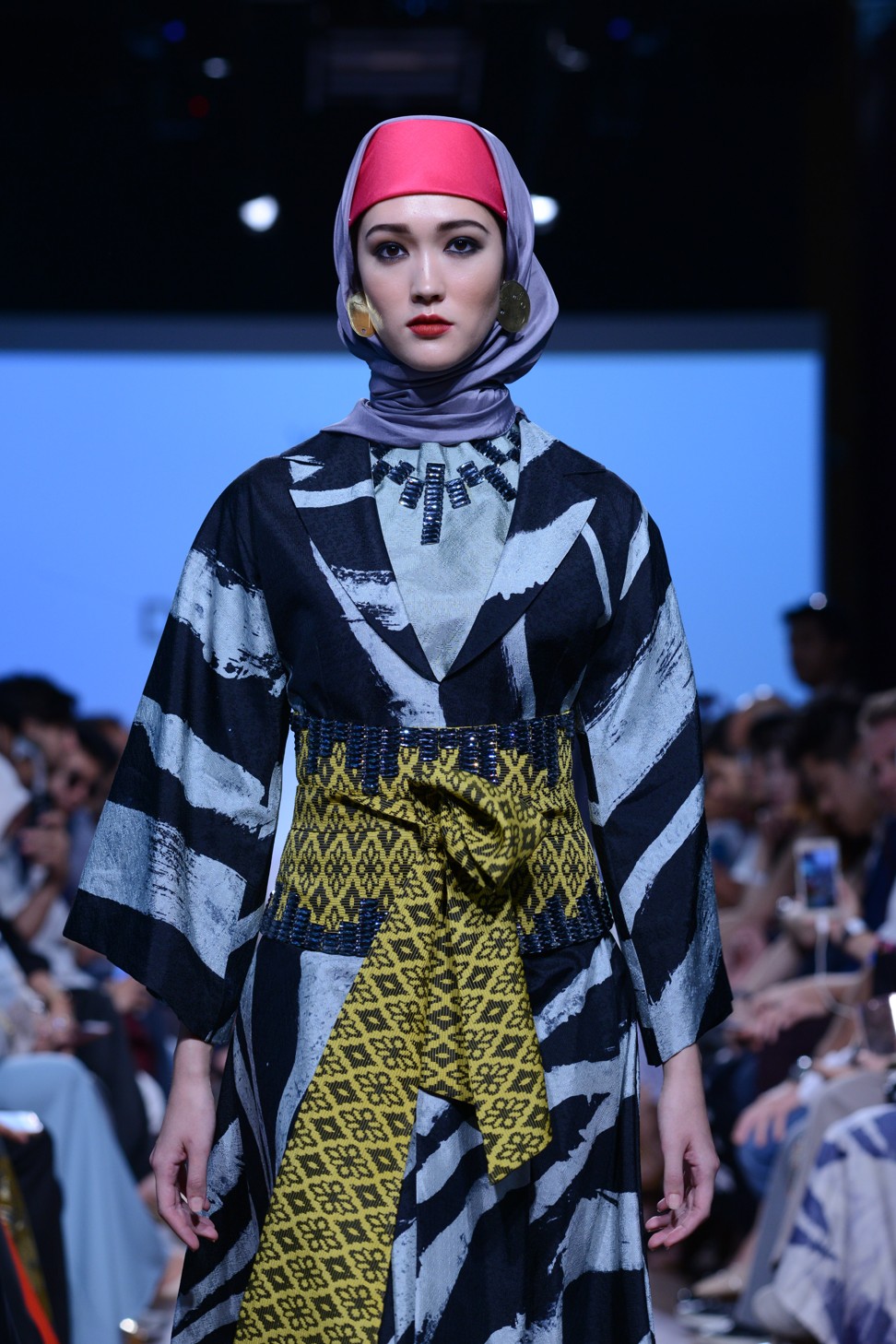
China’s Tasmiah added elegant ink artwork and qipao details to its modest ensembles. Singaporean Adrianna Yariqa presented sharp garments for the hijabi career woman – pinstripe pantsuits, logo tees and monochromatic headwear.
The closest thing to a burka’s eye-covering screen was shown by famed Malaysian couturier Jovian Mandagie, whose baseball caps embellished with frayed, face-veiling fringing were coupled with garments that ranged from designer denim to loose floor-length robing.
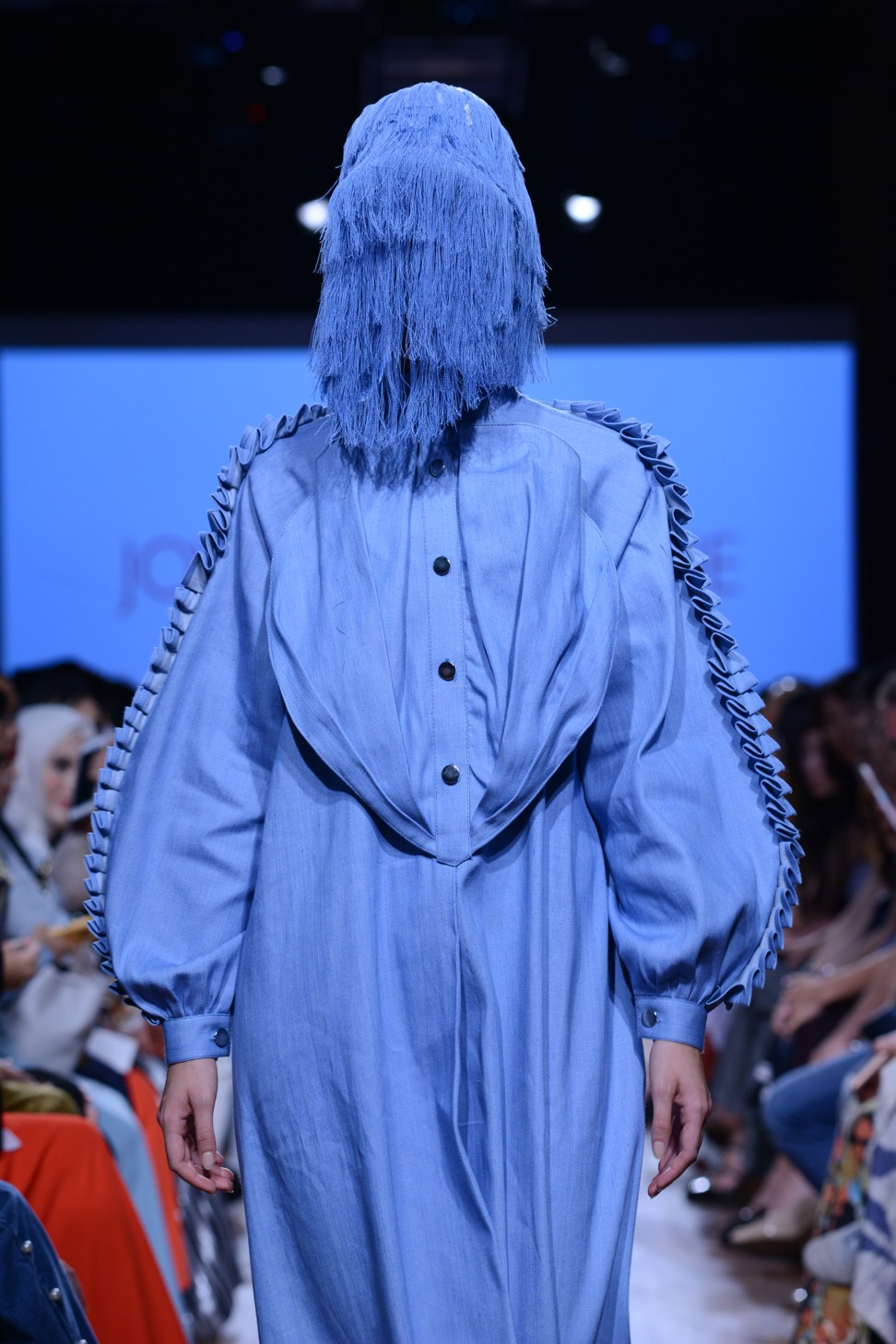
Displaying an alternative modest wear look, Bangladeshi house La Reve went headscarf-free, with breezy fluoro-highlighted tunics over tight Capri pants and sleeves ending at the elbow. Forearms also came to the fore at Singapore’s Feayn show, where frou-frou gowns and turbans ruled the catwalk.
The raunchiest rendition of modest-wear was delivered by the Malaysian student-led Limkokwing Fashion Club. Creative director Tiffanee Marie Lim dropped a figure-hugging, blinged-out collection that covered heads, arms and legs while remaining as saucy as the show’s soundtrack, which included Jamie Foxx’s highly suggestive songStorm.
Women are trying to say, ‘I don’t need to show so much skin to be successful. I don’t need to sell myself by looking so revealing’.”
Lim says with the music and designs, she and her creative team set out to be provocative, and to emphasise the models’ femininity and allure.
“Women are beautiful when they’re classy. Just because you’re wearing long sleeves, that doesn’t take away from how beautiful or sexy you are,” she says. In fact, Lim suggests that, “if you’re clever” while dressing in clothing that fits within the general definition of modest wear, “you could come across as much more sexy” than a woman in skimpier attire.
“Modest fashion just encourages you to think about it more,” she says.
Abu Dhabi-born, Singapore-based designer Nida Shay, who also showed at SGFW, expresses similar sentiments. “Women can still look attractive and glamorous, yet be completely and fully covered up,” says the Paris-trained designer.
“You don’t have to show skin to look attractive. I wanted to take inspiration from traditional Arab dress, and also from my heritage, my roots in Pakistan, and make clothes that were modest yet cool, attractive and whimsical.”

Shay designs her embroidery-embellished frocks to be adaptable to the needs of women in the Middle East – where extra coverage is required – or in Southeast Asia – where some customers choose to be more revealing. “Lined, unlined. Sheer cloth or opaque. Long skirts or short – I’ll customise it for you,” she says.
Women who favour modest wear, she says, “want to be just as fashionable as anyone else – things have changed, modest is not boring, it’s not conservative, it’s not just a religious thing about traditional clothes.”
Book review: Pious Fashion - how modern Muslim women dress, from designer hijabs to celebrating hourglass figures
Modest style has adherents among orthodox Muslim, Jewish, Christian and Hindu communities, as well as people from non-religious communities. “Of course, its roots lie in religion, but it’s not just about that any more,” says Tjin Lee, managing director of Mercury M&C, organisers of SGFW. “A lot of women in Asia just prefer long sleeves, higher necks and longer hemlines,” she says.
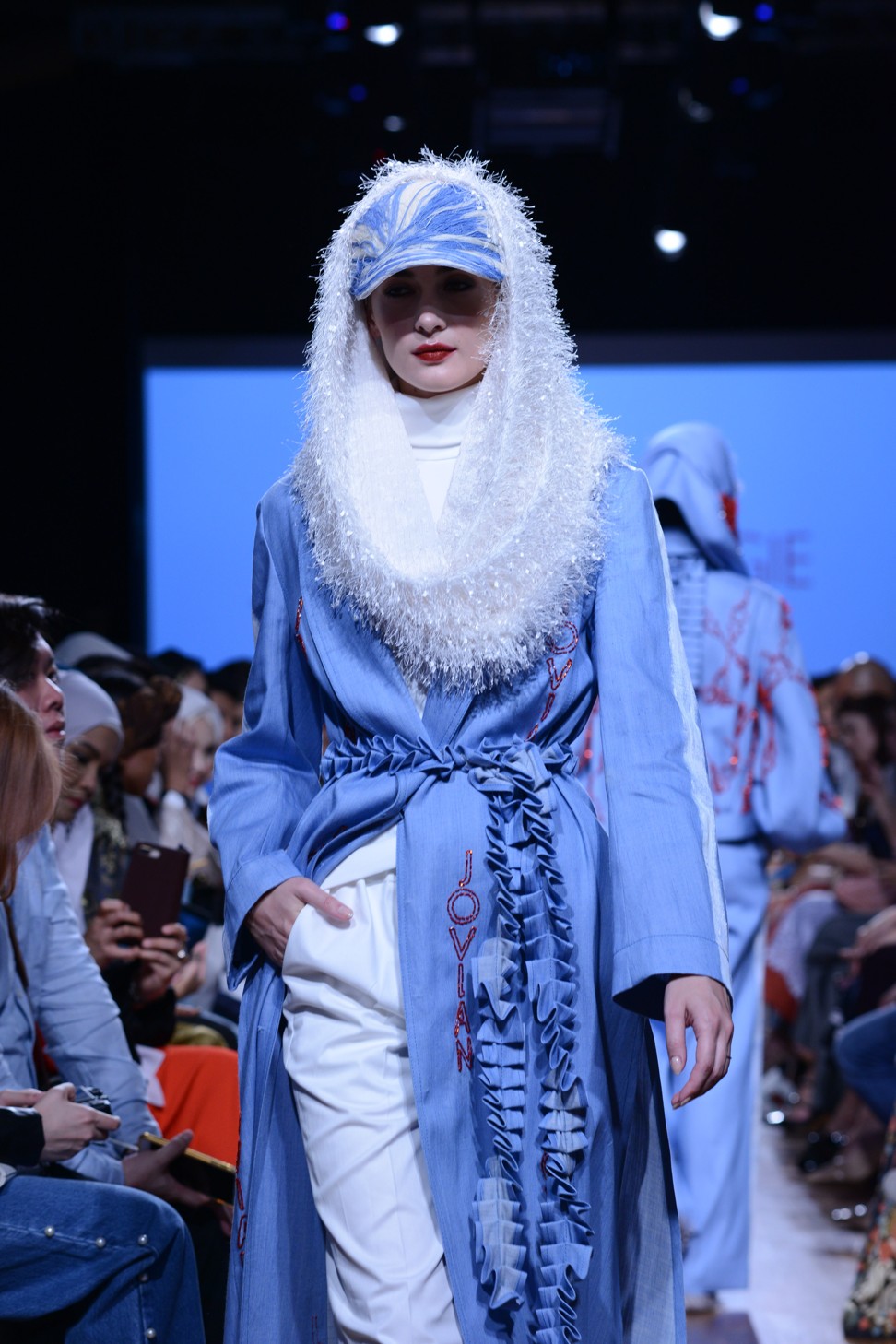
Lee suggests that fashionably modest dressing best meets the modern woman’s practical needs. “As women have become more confident, more empowered, we’ve begun to buy into fashion that can go from day to night. We want to multi-task. You’re not going to wear your spaghetti-strap backless, sleeveless dress to work, so you’ve got to find something that’s more covered up, but still stylish,” she says.
Fashion brands, Lee says, “are designing in response to what the consumers are buying, and less revealing clothing, it’s just more commercial in Asia”.

Rayne Reed, the head of the design studio at Zalora, says the online retailer’s modest wear label, Zalia, does brisk business, particularly in the period around Hari Raya (the religious holiday celebrated by Muslims to mark the end of Ramadan).
“Within the spring-summer season, it’s half of our (sales) volume,” she says. “It’s big. We’re experiencing double-digit growth (in modest wear) and we don’t see that stopping.”
From refugee camp to runway, hijab-wearing US model breaks barriers and helps the headscarf go mainstream
Like Lee, Reed says modest fashion’s appeal goes way beyond the Muslim market.
“Modest wear is a styling choice. It doesn’t have to be grounded in your culture, it can be of course, but it can also be just how you want to dress that day – maybe with a little more coverage. Maybe you want to try a different silhouette. It’s a fashion choice. There can be lots of reasons why a girl wants to be covered,” she says.
Conversely, Muslims who dress traditionally can find the categorisation of modest wear off-putting, preferring to simply layer up and adapt standard fashion to their needs.
“Personally, I don’t like the description modest wear – I don’t know what it means,” says Vivy Yusof, the co-founder of Malaysian e-commerce platform Fashion Valet and a social media influencer with 1.3 million Instagram followers. “[If] I wear a scarf, am I modest? I don’t know,” Yusof says.
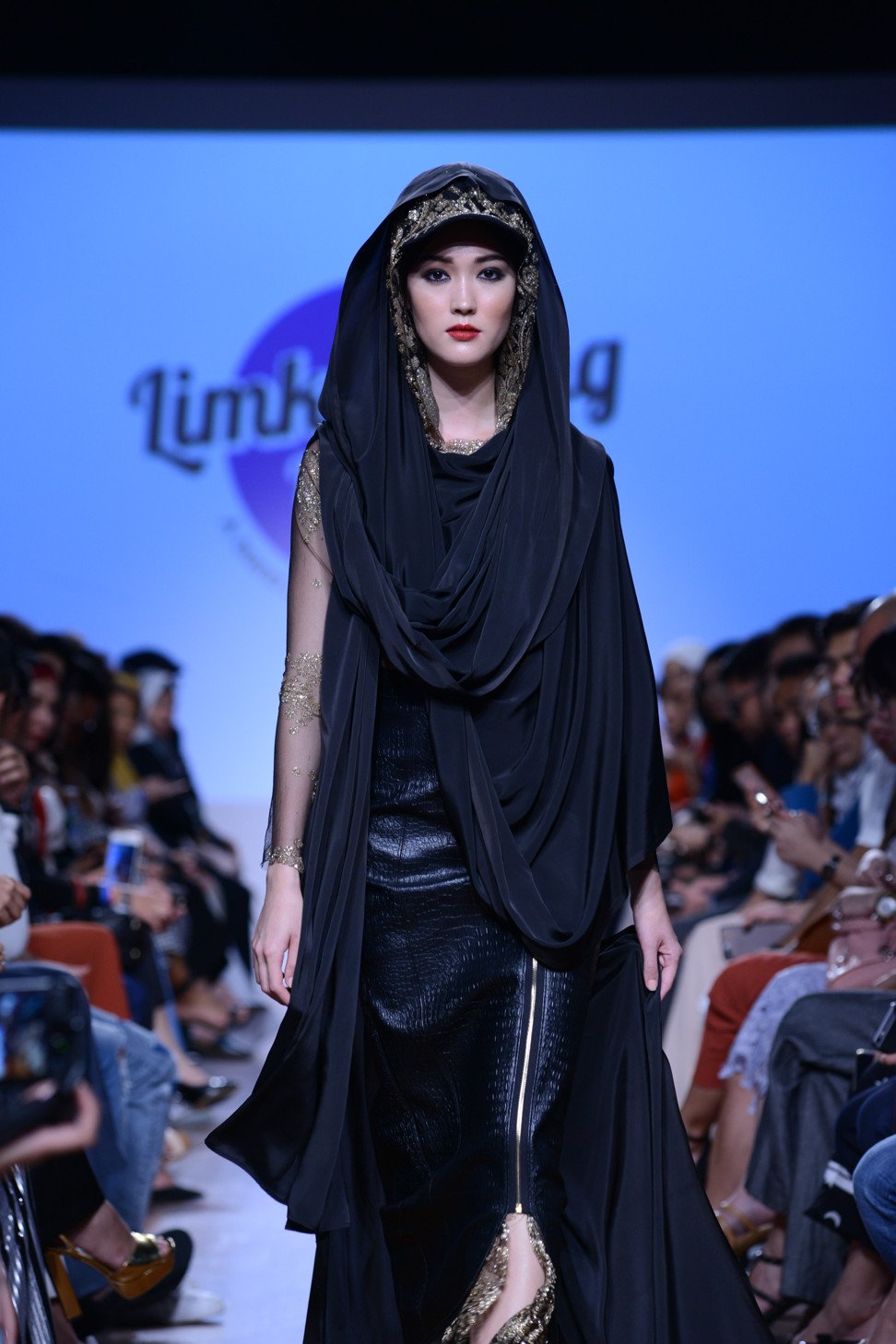
“As a Muslim girl, as a hijabi, I won’t just shop at modest shops. I want to wear off-shoulder tops, skirts, but I’ll style it in my own way. I don’t like the labelling and I don’t get it, but it’s very interesting to see where the [modest wear] space is going to go now, with Uniqlo tapping into the Islamic segment, Nike doing their sports hijab, and lots of things happening to target the Muslim population.”
In any case, in Yusof’s opinion, the trend for modest wear – “whatever that means,” as she puts it – is being driven less by faith and more by gender issues.
“It comes along with female empowerment,” Yusof says. “Women are trying to say, ‘I don’t need to show so much skin to be successful. I don’t need to sell myself by looking so revealing.’ That’s what’s happening.”
